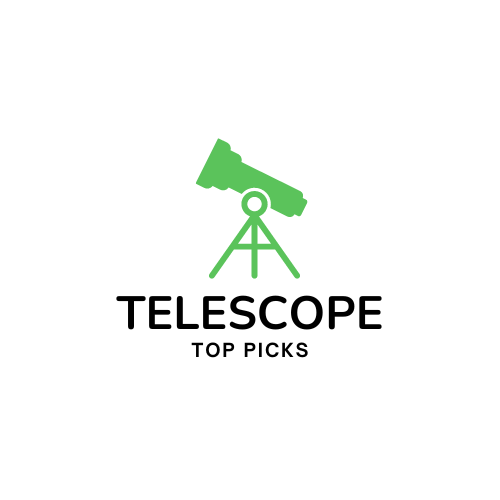
So, you have just purchased a brand-new telescope and you’re excited to explore the wonders of the night sky. However, before you embark on your stargazing adventures, it is crucial to ensure that your telescope’s finder scope is properly calibrated. Calibrating your finder scope is essential for accurately locating celestial objects and aligning your telescope. In this article, we will guide you through the step-by-step process of calibrating your telescope’s finder scope, allowing you to fully immerse yourself in the captivating realm of astronomy.
1. Understanding the Finder Scope
1.1 What is a Finder Scope?
A Finder Scope is a small auxiliary telescope attached to a larger main telescope. Its main purpose is to help astronomers locate celestial objects more easily by providing a wider field of view and a lower magnification compared to the main telescope. The Finder Scope typically has crosshairs or reticle markings to assist in aiming the telescope accurately.
1.2 Importance of Calibrating the Finder Scope
Calibrating the Finder Scope is crucial for ensuring accurate alignment between the Finder Scope and the main telescope. Without proper calibration, it can be challenging to accurately locate and track celestial objects. Calibration allows for precise pointing and ensures that the objects observed in the Main Scope are centered in the field of view.
1.3 Components of a Finder Scope
A typical Finder Scope consists of several components that work together to aid in locating celestial objects. These components include the finder tube or housing, the ocular or eyepiece, and the reticle or crosshair markings. The finder tube holds the ocular and allows for adjusting its focus. The eyepiece provides the magnification required for observing through the Finder Scope. The reticle, often illuminated, contains markings that help align the telescope with the desired target.
2. Preparing for Calibration
2.1 Gather Necessary Tools
Before calibrating your Finder Scope, it’s essential to gather the necessary tools. These tools typically include a small screwdriver or Allen wrench for adjusting the Finder Scope’s alignment screws, a cleaning cloth or brush for removing dirt or dust, and a level for ensuring the telescope mount is properly leveled. Having these tools readily available will streamline the calibration process.
2.2 Choose an Appropriate Location
Selecting an appropriate location is vital when calibrating your Finder Scope. Ideally, choose a place with an unobstructed view of the sky, away from bright lights or other sources of light pollution. This will minimize the interference and provide a clear view of stars and other celestial objects. Additionally, ensure that the telescope mount is placed on a stable surface, such as a sturdy tripod, to avoid vibrations that can affect calibration.
2.3 Clean the Finder Scope
Before starting the calibration process, it’s essential to clean the Finder Scope to ensure clear and accurate observations. Use a soft cleaning cloth or brush to remove any dirt, dust, or smudges from the lens and other components. Avoid using abrasive materials or liquids that could damage the delicate surfaces of the Finder Scope. With a clean Finder Scope, you’ll have a better view of the sky and improved calibration accuracy.
2.4 Leveling the Telescope Mount
Properly leveling the telescope mount is crucial for accurate calibration. Use a bubble level to ensure that the mount is leveled in both horizontal and vertical directions. This step is especially important if your mount has an equatorial mount, as it needs to be aligned with the Earth’s polar axis. A leveled mount provides a stable base for the telescope, minimizing any unintended movements during calibration and observation.

3. Aligning the Finder Scope
3.1 Positioning the Target Object
To align your Finder Scope, begin by selecting a bright and easily identifiable target object in the sky. Choose a star or planet that is visible and distinctive. Place the target object in the center of the eyepiece of your main telescope. This initial alignment will serve as a reference point for calibrating the Finder Scope.
3.2 Aligning with Earth’s Polar Axis
For precise calibration, it’s crucial to align your Finder Scope with the Earth’s polar axis. This alignment allows the telescope to accurately track celestial objects as the Earth rotates. To align with the polar axis, adjust the telescope mount’s alignment knobs or screws, typically found at the base of the mount. By aligning with the polar axis, the Finder Scope will also be aligned with the same axis, enhancing accuracy.
3.3 Tweaking the Finder Scope
With the main telescope aligned and the polar axis set, it’s time to fine-tune the alignment of the Finder Scope. Use the adjustment screws or knobs on the Finder Scope to move the crosshairs or reticle until they are centered on the same target object previously placed in the main telescope’s eyepiece. Make small adjustments and take your time to ensure precision.
3.4 Checking Alignment
Once you have made adjustments, verify the alignment of the Finder Scope by observing another star or celestial object. Choose an object slightly away from the initial alignment point and ensure it appears centered in the Finder Scope’s reticle. If the object is not centered, repeat the tweaking process until alignment is achieved. Checking the alignment after adjustments is essential to ensure accuracy when locating other celestial objects.
4. Testing and Adjusting Calibration
4.1 Testing the Finder Scope
After the initial calibration, it’s essential to verify the accuracy of your Finder Scope. Test it by aiming at different stars and celestial objects. Take note of how accurately the objects appear centered in the Finder Scope. If consistent inaccuracies are observed, adjustments may be necessary to improve the calibration further.
4.2 Adjusting the Alignment
If the Finder Scope consistently shows misalignments or deviations from the desired position, it may require additional adjustments. Revisit the alignment screws or knobs and make fine adjustments to bring the reticle back into perfect alignment with the observed objects. Patience and careful adjustments are key to achieving an accurate calibration.
4.3 Fine-Tuning the Calibration
To refine the calibration and improve accuracy, make slight adjustments to the Finder Scope’s alignment during different observing sessions. By observing various celestial objects and adjusting as necessary, you can achieve a finely tuned calibration that will make locating and tracking objects easier and more precise.

5. Troubleshooting Calibration Issues
5.1 Blurry or Distorted Views
If you encounter blurry or distorted views through your Finder Scope, it may be due to several factors. Firstly, double-check that the Finder Scope’s lens is clean and free from dirt or smudges. Additionally, verify that the eyepiece is correctly focused. Adjust the focus knob on the Finder Scope until the viewed objects appear clear and sharp.
5.2 Difficulty in Finding Objects
If you are having trouble locating objects with your calibrated Finder Scope, there are a few troubleshooting steps to consider. Firstly, ensure that the Finder Scope’s alignment remains accurate. Any misalignments can lead to difficulties in finding objects. Double-check the alignment periodically, especially if you experience challenges locating desired celestial objects.
5.3 Adjusting for Different Eyepieces
When using different eyepieces with varying magnifications, it’s important to account for the changes in field of view. Adjust the Finder Scope calibration as necessary when switching between eyepieces to ensure that objects remain centered in the reticle. Regularly checking alignment when changing eyepieces will result in accurate observations regardless of magnification.
5.4 Re-calibrating Over Time
Over time, the alignment of your Finder Scope may shift or become less accurate. Factors such as temperature changes, transportation, and general wear can impact calibration. It is recommended to periodically re-calibrate your Finder Scope to maintain optimal accuracy. Regular calibration checks will help ensure consistent and precise observations.
6. Additional Tips and Considerations
6.1 Regular Maintenance
To keep your Finder Scope performing at its best, it’s essential to maintain it regularly. Clean the lens and other components periodically to remove any dirt, dust, or smudges that may affect the clarity of the observed objects. Additionally, inspect the alignment screws or knobs for any signs of looseness or damage. Regular maintenance will prolong the life of your Finder Scope and maintain its accuracy.
6.2 Recording Calibration Settings
To streamline your future observing sessions, consider recording the calibration settings of your Finder Scope. Take note of the positions of the alignment screws or knobs that provide the best accuracy. This record will serve as a reference for future calibrations, especially if you need to re-align after maintenance or transportation.
6.3 Utilizing Electronic Finder Scopes
Electronic Finder Scopes, also known as red dot finders, are popular alternatives to traditional optical Finder Scopes. They use a red dot or reticle projected onto a clear screen to assist in aiming. While the calibration process may differ for electronic Finder Scopes, the core principle remains the same. Consult the specific instructions provided by the manufacturer when calibrating electronic Finder Scopes.
6.4 Seeking Professional Assistance
If you encounter persistent calibration issues or have difficulties aligning your Finder Scope, seeking professional assistance can be beneficial. Astronomical societies, local observatories, or experienced astronomers may provide guidance or offer services to help calibrate your telescope’s Finder Scope accurately. Don’t hesitate to reach out for expert advice when needed.
With a properly calibrated Finder Scope, your stargazing sessions will become more enjoyable and productive. The time and effort invested in the calibration process will reward you with precise and accurate observations of the wonders of the night sky. So grab your tools, choose a clear night, and begin the calibration journey to enhance your stargazing experience.









